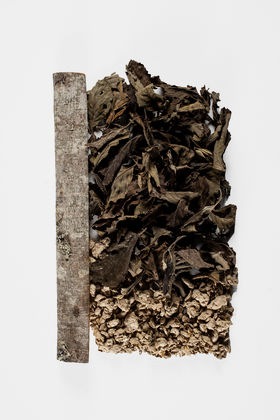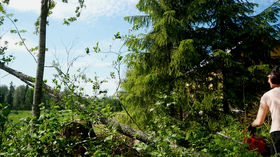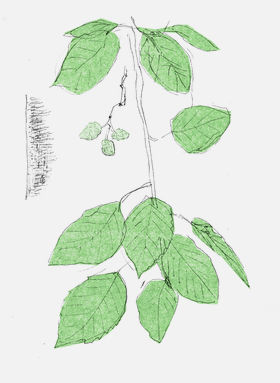Forest − a designer's perspective by Saara Kantele
This study addresses this gap by aiming to understand the multiple values of the forests and wood as material for the design practices. The goal of the study is also to gather and transmit knowledge and to raise discussion of forests, especially in the field of design. The research question is: how can I as a designer respect forests and wood as a material and apply this understanding to my design?

Abstract:
Forests have ecological, economic and social values and are a highly topical theme. The forest is a widely studied subject in Finland, especially from the standpoints of the forest industry and ecology. However, also a designer is an important link between the material source and the end product or service. Nonetheless, a comprehensive and topical designer's point of view is missing.
This study addresses this gap by aiming to understand the multiple values of the forests and wood as material for the design practices. The scope is on Finnish forests and designers, in order to narrow down the wide subject and due to the partly personal approach. The research is based on novel studies and empirical evidence and applies the information gathered to the artistic design process. The goal of the study is also to gather and transmit knowledge and to raise discussion of forests, especially in the field of design. The research question is: how can I as a designer respect forests and wood as a material and apply this understanding to my design?
The research utilises a wide variety of source material. Firstly, the literature includes ecology, forest and materials science, and art. Secondly, documented forest trips and conversations with specialists are used as a source of knowledge. The methods include subjective observation, semi-structured interviews, and research-based design. Furthermore, the wood material is studied by harvesting and researching a grey alder. The knowledge gathered thorough the process is reflected in a series of furniture and objects from Finnish wood species and recycled wood materials. The series reflects peasant traditions and utilises novel technologies.
The study increased my multi-faceted understanding of forests and affected my design. Forests proved to be dignified entities with an important role in the world. Furthermore, it proved to be important for a designer to understand forests and wood as a material. Forests are evidently a strong inspiration for art in all of its forms. However, the modern forest relationship appeared problematic. The forest relationship of Finns' has been intimate and respectful, but the respect does not concretise in practice. It seems that the present harvesting and cultivation methods are monocultural, suboptimal, often harmful, and in need of a renaissance — It is possible to influence the biodiversity, the carbon absorption, and the availability of quality material for design. In order to achieve more balanced relationship with forests, conversations and knowledge transfer between designers and specialists is important. To support this, the process included a public exhibition and an online conversation.
The information gathered in the process influenced the research content and the design. Furthermore, surprises had an influence on the outcome. The lengthy drying of the wood affected the study sequence and the limited amount of ready timber the scale of the stool. The wood behaviour and machining problems led to production-phase changes, as the availability of wood materials guided the selection of wood species and thicknesses. A working challenge was also the worldwide lockdown and distance learning, which affected the timetable and research plan.
The study demonstrated that it is worth for a designer to gather forest and wood knowledge firsthand as well as utilise local tradition and experience-based knowledge. The Finnish tree species should be favoured widely in the forests and production, and forestry should weight equally ecological and social aspects alongside economic concerns. Moreover, fibre materials have a great potential, and the focus should especially be on utilising waste and leftover fibres. Furthermore, it is functional and characteristic for massive wood to be utilised in lasting furniture and buildings, while recyclable fibre materials should be favoured for products with a short lifespan. In conclusion, forests are a treasure we should nurture for the generations to come.





















